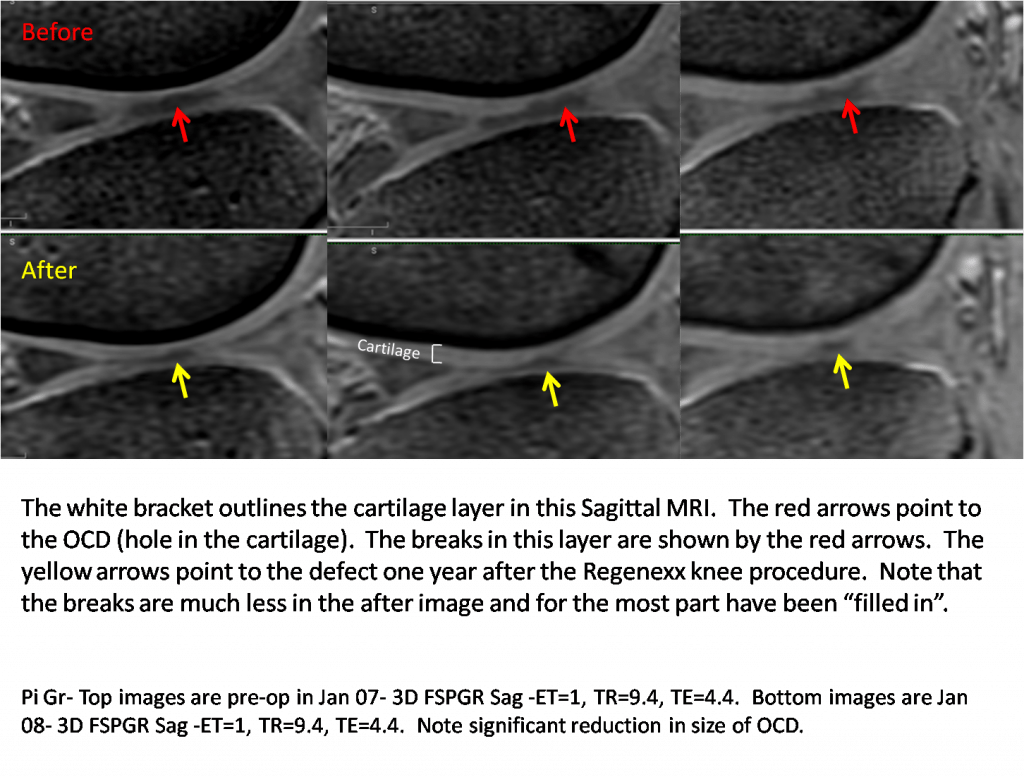When OCD doesn’t mean Obsessive Compulsive Disorder
OCD is a medical abbreviation for osteo-chondral defect. It literally means “bone-cartilage” defect. The term has come to mean a “hole” in the cartilage, mostly found at the end of the femur bone in the knee. The term can be confusing, as the OCD abbreviation is also used for “Osteochondritis Dessecans”, which is where the cartilage dries out. The OCD where the cartilage dries out can lead to it flaking off and this can leave a hole type OCD. Confused? The hole type OCD is most commonly found in middle aged, active people on the medial (inside) of the knee and it’s more likely to be caused by trauma. The dried out type OCD is more common in active adolescents and more likely to involve an issue in the bone beneath the cartilage. This dried out type OCD looks an awful lot like AVN (avascular necrosis/osteonecrosis) where the bone starts to die off, then the cartilage on top develops a problem.
This the story of a 40 something active nurse who participated in high level martial arts. She injured her knee during a kicking exercise and had a normal MRI. The MRI was an older unit (less resolution) and while it looked normal, it missed a big hole in the cartilage that was later found on arthroscopy. The hole was debrided and she was told to either get micro fracture or a knee replacement if the pain persisted. She ultimately found one of our research studies. Once it was clear that her debridement surgery had failed, she had an early form of the Regenexx-C knee procedure. She did well and went back to martial arts.

The above images show a special MRI sequence that is primed to help measure changes in cartilage. In this sequence type, the bone is dark and the cartilage layer (labeled above) is the lighter color. The dark area just below the light cartilage (see the red arrows) is the “hole” or OCD. The breaks in the cartilage layer are easily visible in the above images. In the below images, the yellow arrows show that much of this has filled in. So OCD doesn’t have to have anything to do with behavior, it can just mean a “pot hole” in the knee. This one shows improvement on MRI, not with drugs or surgery, but with simple injections. While we could have treated the area further, the patient was doing well enough that she just returned to activities.
This patient was treated with the Regenexx-C (cultured stem cell injections). Please note that not every knee patient we treat does as well as PG.

NOTE: This blog post provides general information to help the reader better understand regenerative medicine, musculoskeletal health, and related subjects. All content provided in this blog, website, or any linked materials, including text, graphics, images, patient profiles, outcomes, and information, are not intended and should not be considered or used as a substitute for medical advice, diagnosis, or treatment. Please always consult with a professional and certified healthcare provider to discuss if a treatment is right for you.
